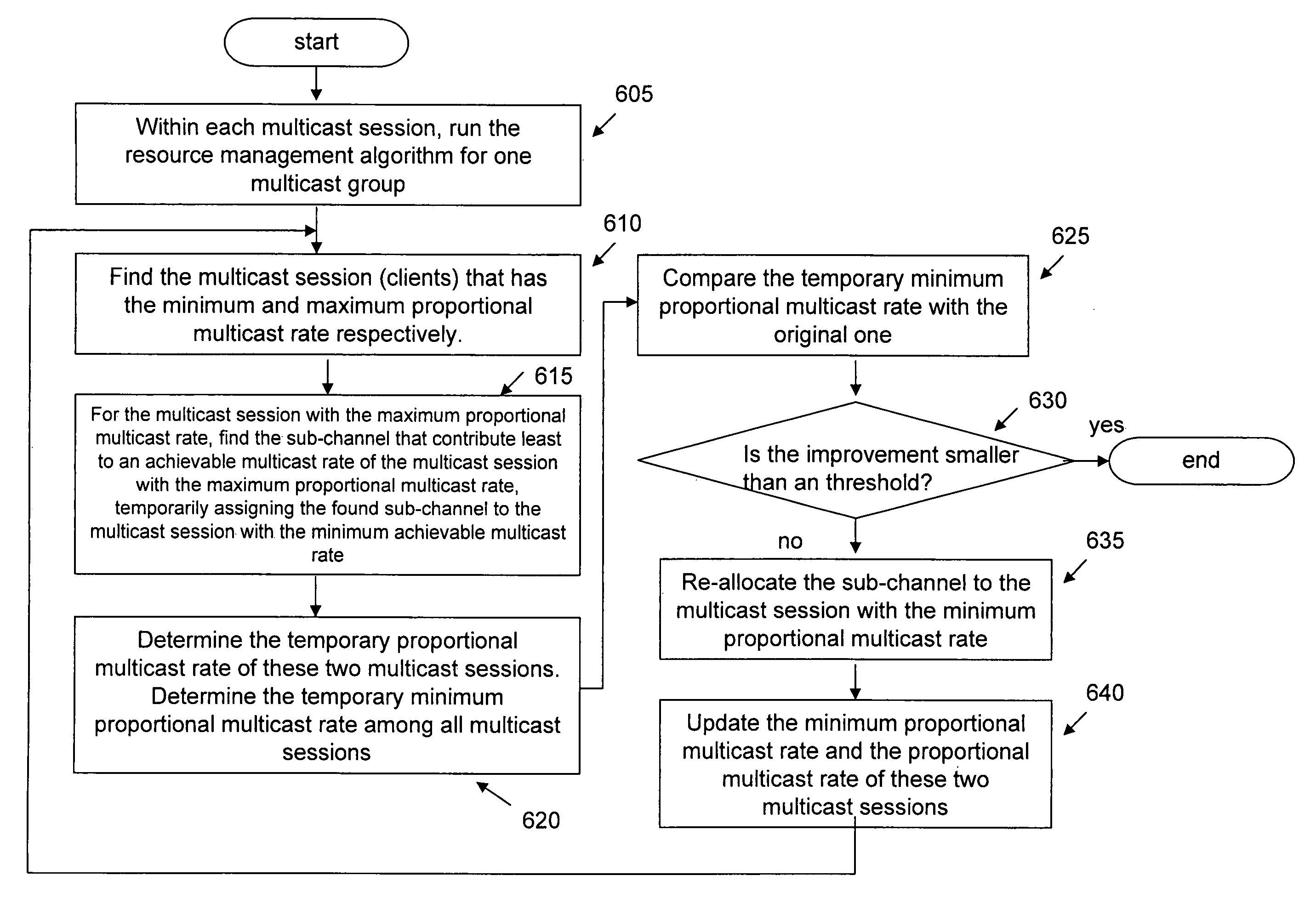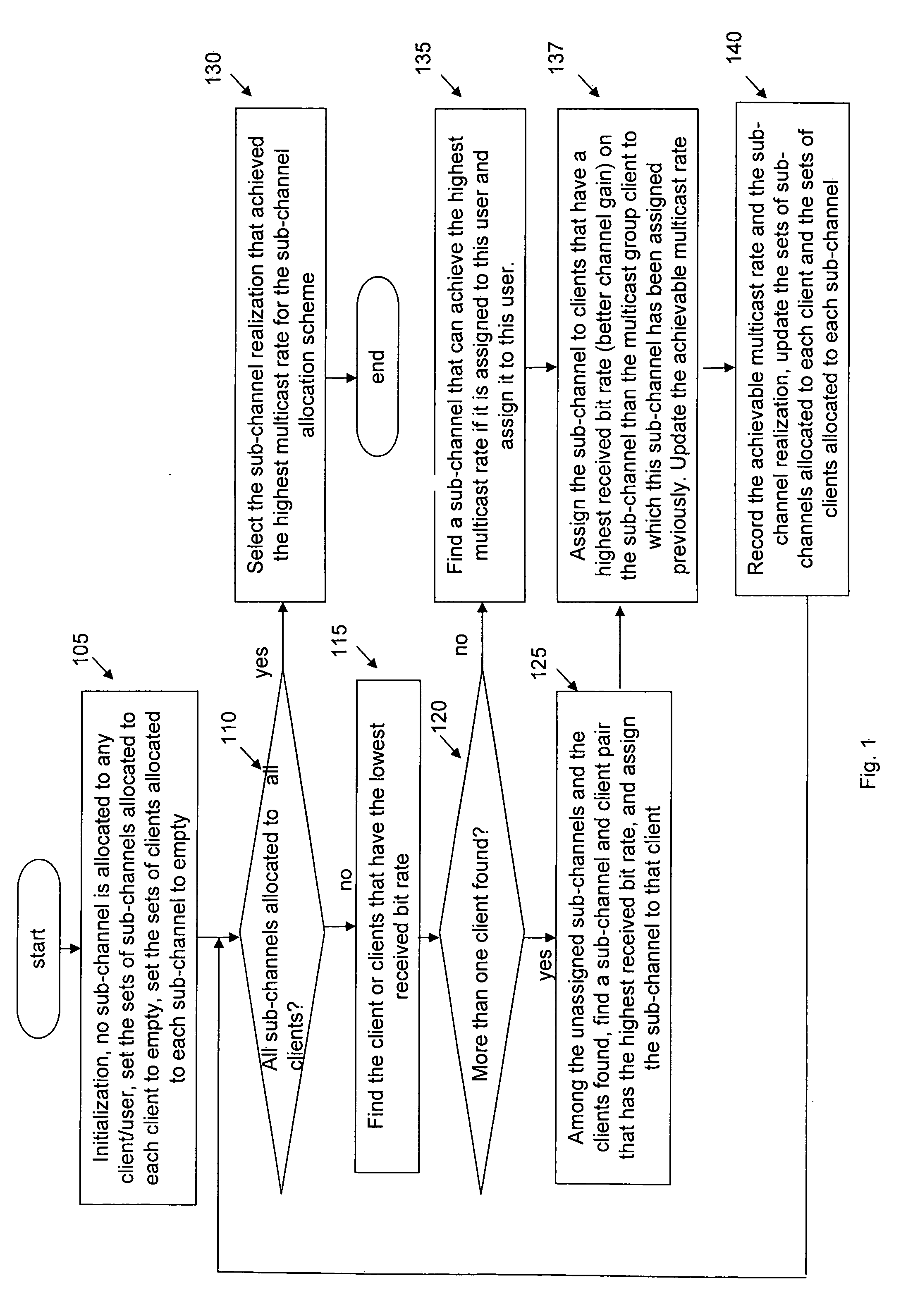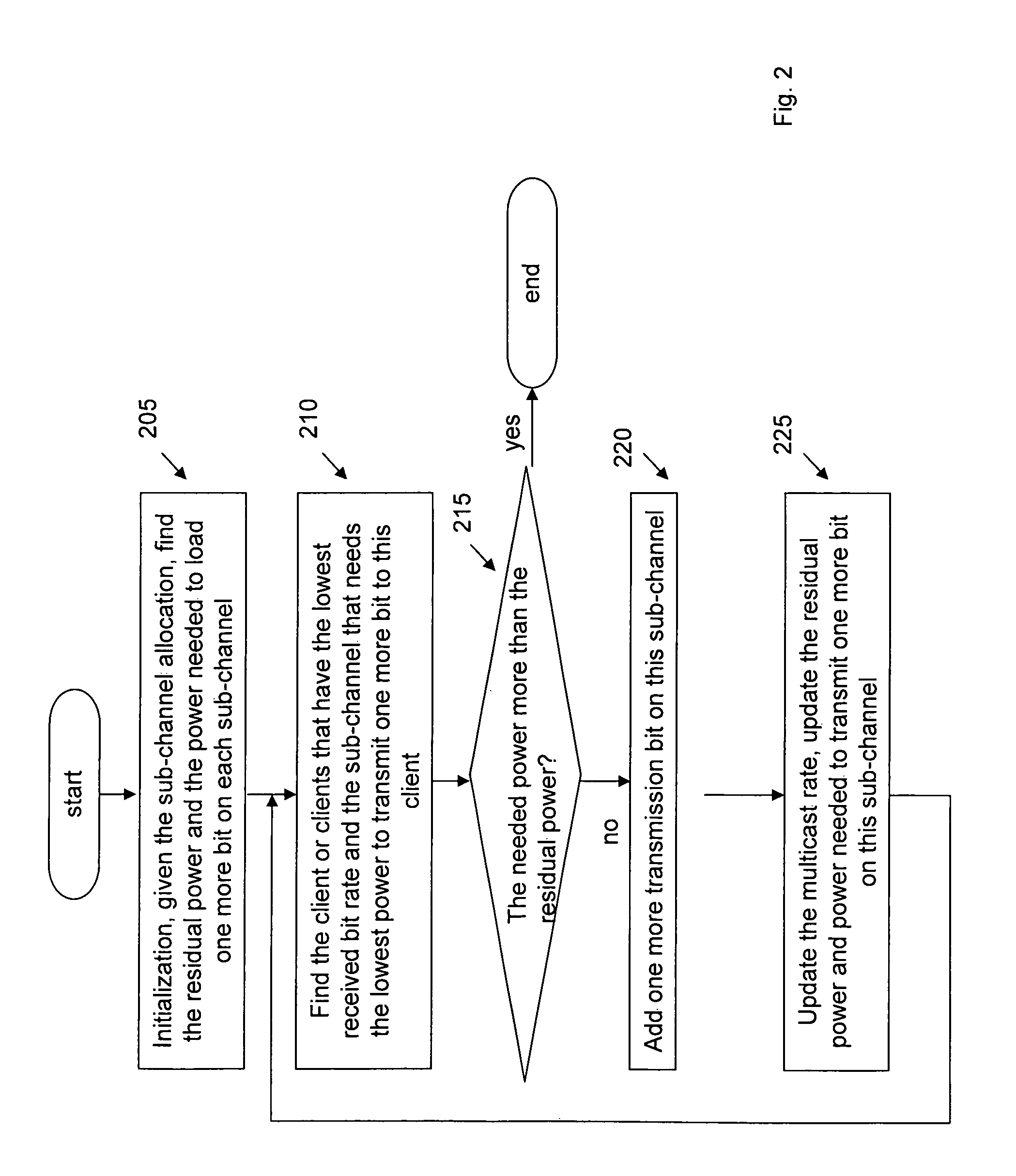Method and apparatus for sub-channel and power allocation among multicast sessions of a multicast system using an orthogonal frequency division multiple access scheme
a multicast system and orthogonal frequency division technology, applied in the field of wireless multicast communications, can solve problems such as bad channel conditions in conventional multicast systems, and achieve the effects of maximizing multicast rate, high quality multimedia support, and improving bandwidth efficiency
- Summary
- Abstract
- Description
- Claims
- Application Information
AI Technical Summary
Benefits of technology
Problems solved by technology
Method used
Image
Examples
Embodiment Construction
[0020]A multicarrier multicast network is considered with a BS and K users. The communication links between the BS and the users are assumed to be frequency selective and composed of N independent parallel sub-channels. Sub-channel gains between the BS and each user are available to the BS and all users. The BS has a short term power budget PT. The problem solved by the present invention is how to allocate the sub-channels to the users and power to the sub-channels adaptively in order to maximize the instantaneous multicast rate.
[0021]The following definitions / notations are used herein:
[0022]K: is the number of the users.
[0023]N: is the number of the sub-channels.
[0024]PT: is the total power of the BS.
[0025]hn,k: is the channel gain of the sub-channel n for user k.
[0026]BER: is the maximum allowed bit error rate. This is the quality of service (QoS) requirement of an application. For an example, a bit error rate above this value will impact a viewer's experience of a video streaming...
PUM
 Login to View More
Login to View More Abstract
Description
Claims
Application Information
 Login to View More
Login to View More - Generate Ideas
- Intellectual Property
- Life Sciences
- Materials
- Tech Scout
- Unparalleled Data Quality
- Higher Quality Content
- 60% Fewer Hallucinations
Browse by: Latest US Patents, China's latest patents, Technical Efficacy Thesaurus, Application Domain, Technology Topic, Popular Technical Reports.
© 2025 PatSnap. All rights reserved.Legal|Privacy policy|Modern Slavery Act Transparency Statement|Sitemap|About US| Contact US: help@patsnap.com



